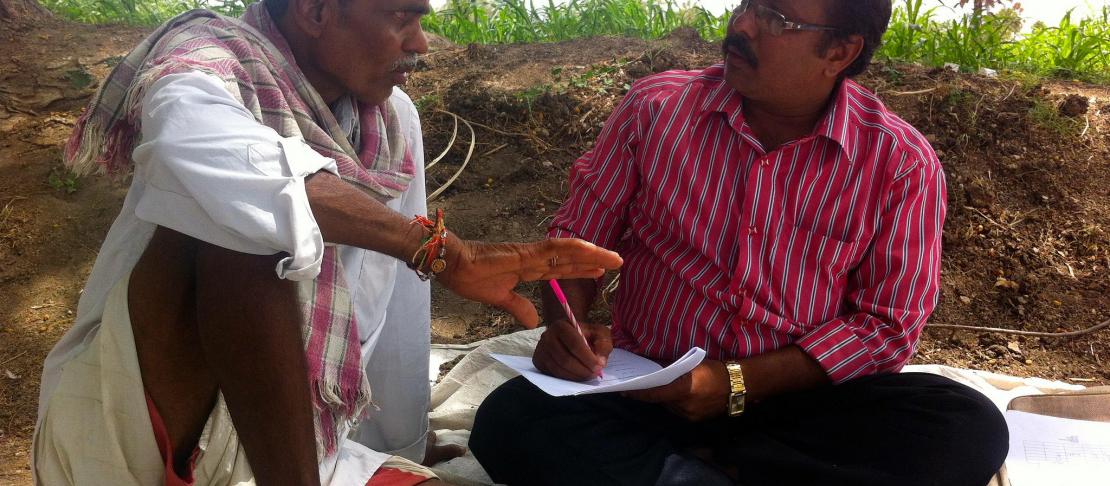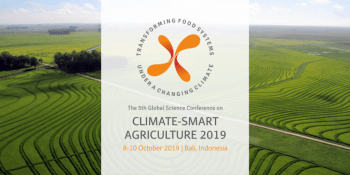How can we ‘mainstream’ efforts to prepare for climate risks in agriculture?

There is a growing awareness that management of climate risks must be integrated into development. But how can this happen?
Almost 70% of people in developing countries live in rural areas and many rely on agriculture. The latest IPCC report confirmed that climate change poses large risks to food security. That is why there has been increasing attention to 'mainstreaming' climate change in agriculture.
Our recent open-access paper in the Special Issue of the Climate and Development journal reviewed lessons from various case studies in Asia and Africa, including two CCAFS projects in India and Uganda.
We looked at the barriers and opportunities for ‘scaling up’ community-based efforts to adapt to climate change. Community-based adaptation builds on the long history of community-driven development, in which local participation is central.
Bangladesh and Mozambique: Reach of extension services is a barrier
Bangladesh and Mozambique have both taken initial steps to integrate climate change in national programmes and planning.
Bangladesh has already begun to mainstream adaptation into various institutions, including collaborating with farmer field schools. However, it is not yet clear to what extent these efforts will be community-focused in practice.
Literacy was highlighted as a barrier to communicating climate risks. The limited reach of extension services also poses a barrier in both countries. In Bangladesh, for example, there is only around 1 extension worker for every 12,000 farmers.
In Mozambique, the Adaptation for Smallholder Agriculture Programme (ASAP) is now being implemented, which recognises infrastructure and markets will be fundamental to help farmers adapt.
Uganda: Do government policies exacerbate vulnerabilty?
In Uganda, discussions with farmers highlighted that non-functional policies have increased vulnerability. CCAFS has been working with the International Institute of Tropical Agriculture (IITA) in Rakai District.
Local farmers explained that communal grazing lands and wetlands had been leased out to well-off farmers, which made poor farmers more vulnerable.
Land tenure is insecure, and smallholders often felt helpless, because existing laws are not implemented to assure their access to land and natural resources.
India: Opportunities to Engage Young Farmers
In India, the International Maize and Wheat Improvement Center (CIMMYT) has been working with young farmers to pilot and demonstrate various climate-smart technologies.
Young farmers in Karnal District showed a keen interest in new-generation technologies, like precision levelling to save irrigation water. These young farmers were very interested in the long-term future of farming.
By forming a cooperative, farmers were able to pool resources, and also conveyed their priorities to decision-makers. These activities also attracted media and political attention. The benefits of the climate-smart technologies included monetary benefits, employment opportunities, and more efficient use of water and fuel.
'Mainstreaming’ must not become a ploy to reduce finance
The case studies demonstrate the value of a locally-focused approach to climate risks. Climate risks are experienced locally, so there is a need for policy-makers to base their adaptation plans on farmers’ real priorities and knowledge to help them prepare.
The case studies show that there is an existing “development deficit” because people are already finding it hard to cope with current climate risks, let alone future risks. ‘Mainstreaming’ of adaptation into development must not become a ploy to lower the levels of support.
Existing services and policies are not sufficient – so support and finance for both agricultural development and adaptation to climate change must be strengthened in order to help vulnerable farmers to adapt.
As found in Uganda, a key part of this will be finding about the local priorities of vulnerable farmers, including enabling farmers to convey their priorities to government.
Written by Helena Wright, PhD Researcher at the Centre for Environmental Policy, Imperial College London. The article in Climate and Development was co-authored with Sonja Vermeulen, Gernot Laganda, Max Olupot, Edidah Ampaire & M.L. Jat.



